

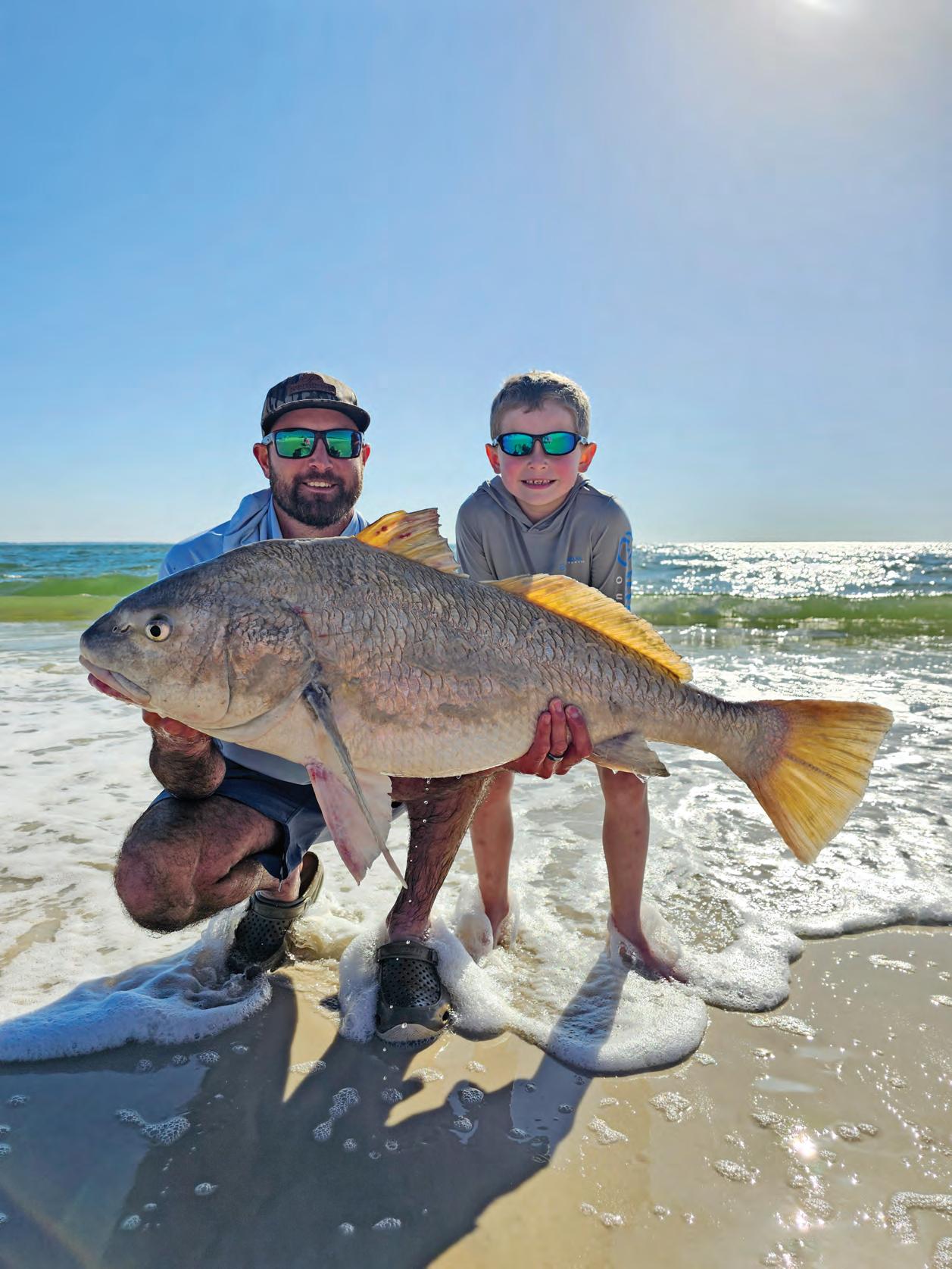
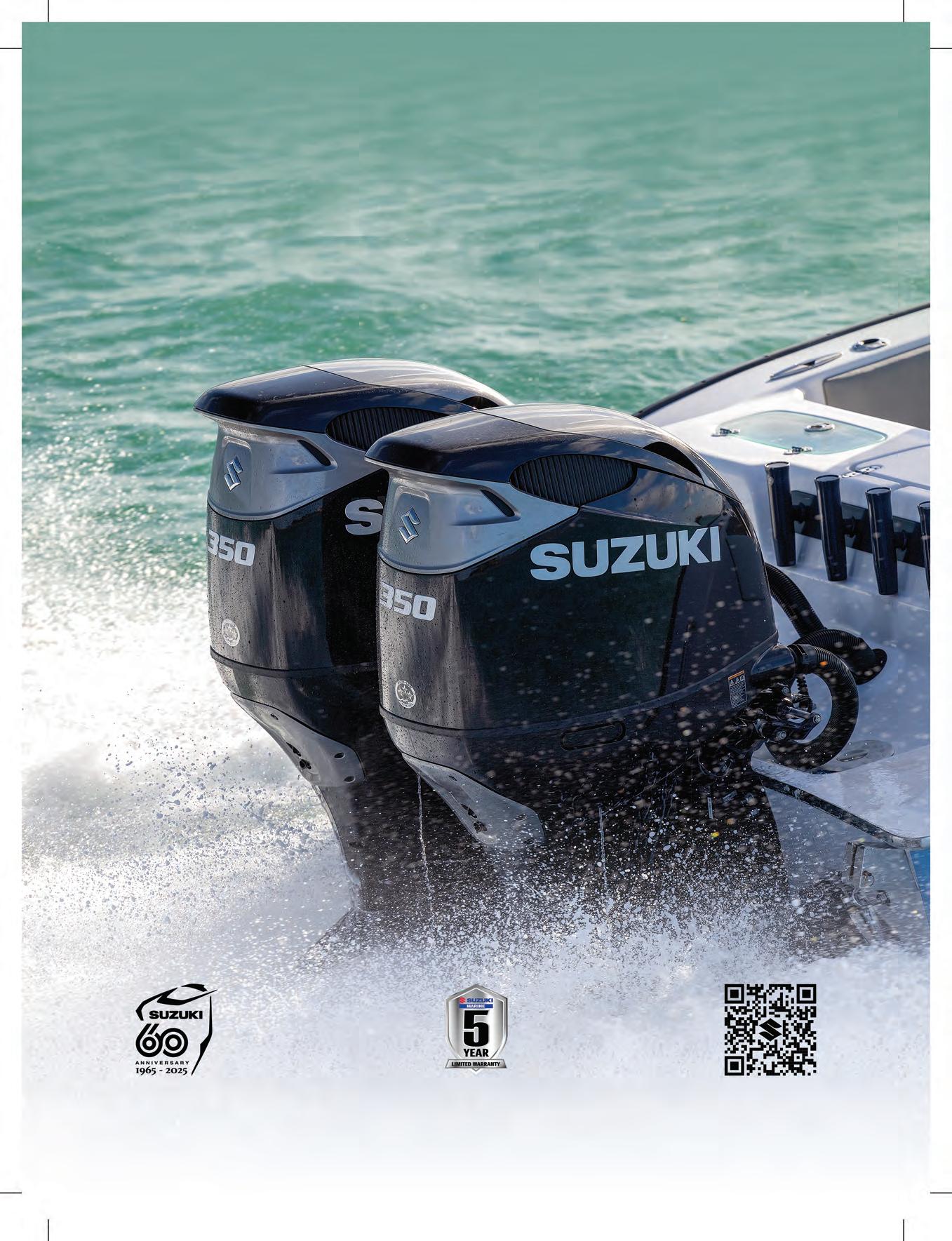

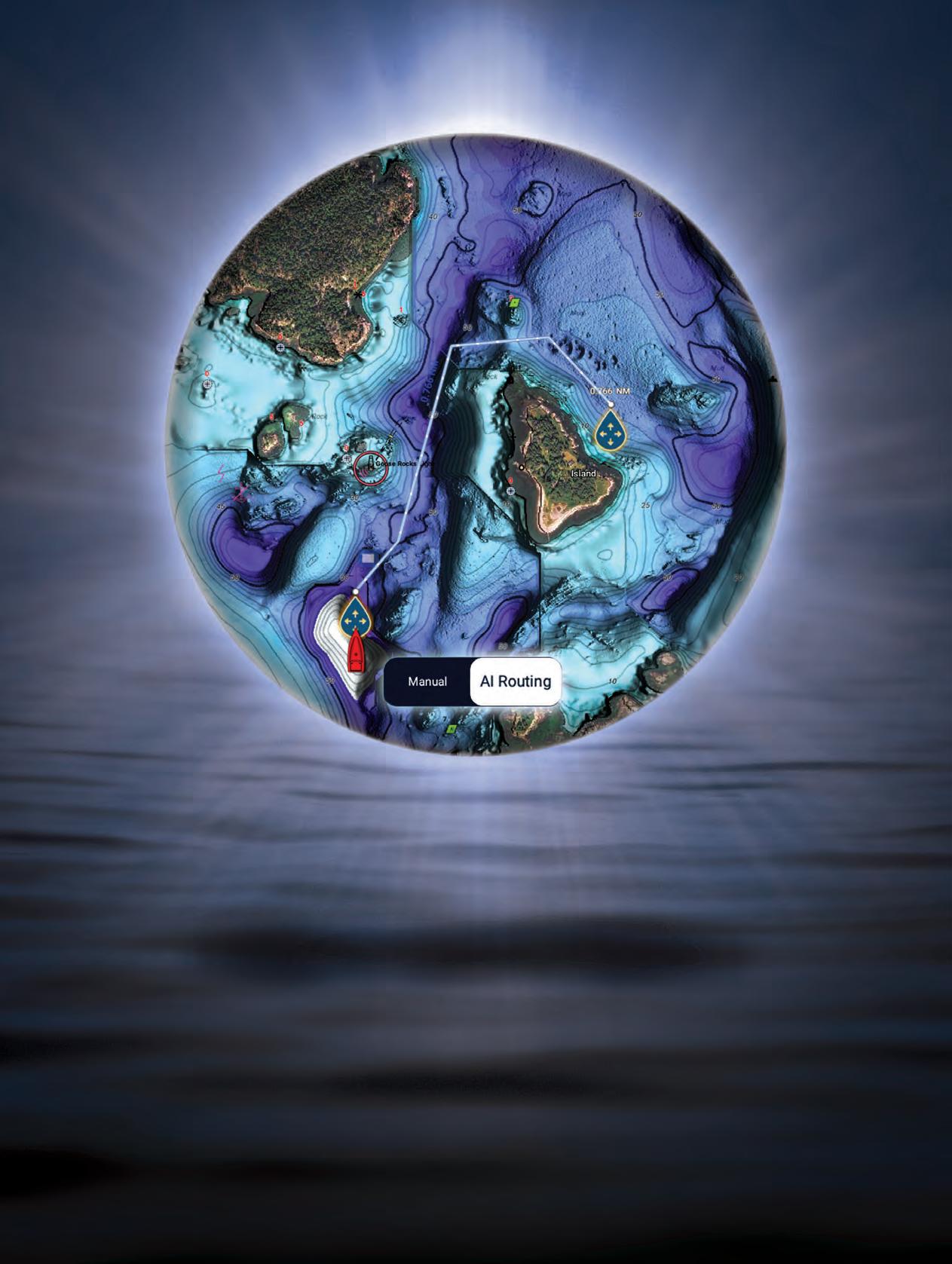
You want AI Routing! Let TZ MAPS with AI Routing make route planning a snap. Don’t take our word for it. Scan here to see for yourself how easy it is!


















You want AI Routing! Let TZ MAPS with AI Routing make route planning a snap. Don’t take our word for it. Scan here to see for yourself how easy it is!


















Embarking on the open water is an exhilarating experience, flled with the promise of adventure and relaxation. Whether you’re a seasoned sailor or a weekend cruiser, protecting your vessel with proper insurance is not just a choice—it’s a necessity. Explore the reasons why every boat owner should prioritize boat insurance for a worry-free voyage.
The open water can be unpredictable, with unexpected storms, collisions, or other potential accidents. Boat insurance can give you fnancial protection if there is damage to your vessel, providing coverage for repairs or replacement.
Accidents on the water can result in damage to other boats, docks, or even injuries to passengers. Boat insurance offers liability coverage, which can pay for damages or injuries you’re liable for while boating, up to specifed limits, and lawsuit costs if you’re sued. This includes damage you cause to another watercraft or if someone on or near your boat is injured and you’re found to be legally responsible.
Unfortunately, boat theft and vandalism are realities that boat owners face. Boat insurance has comprehensive and collision coverage that can protect you against events outside of your control, including theft and vandalism.
Accidents on the water may lead to injuries for you or your passengers. Boat insurance offers a range of optional medical payments coverage limits, helping to cover medical expenses if you are in an accident or someone is hurt on your boat, regardless of fault.
If you fnanced the purchase of your boat, most lenders require insurance coverage to protect their investment. Having boat insurance not only fulflls these requirements but also gives you peace of mind knowing that your fnancial interests are safeguarded.


Some water municipalities and marinas may require proof of insurance for docking or accessing certain areas. Boat insurance allows you the fexibility to explore different destinations without worrying about entry restrictions.
Emergency towing and assistance
Progressive boat insurance can include optional Sign & Glide® On-Water Towing coverage. If your boat is disabled or breaks down on the water, Sign & Glide® pays for on-water towing, jump starts, soft un-groundings, and fuel delivery.
Wreckage removal
If your boat sinks, Progressive boat insurance will cover the cost of removing your boat from the water (if removal is legally required).
Investing in boat insurance is not just about protecting a valuable asset; it’s about safeguarding the memories, experiences, and joy that come with your on-water adventures. Don’t let unforeseen circumstances disrupt your journey—navigate with confdence, knowing that Progressive boat insurance has you covered. Ensure a smooth and worry-free voyage, because when it comes to your boat, peace of mind is the ultimate luxury.
Scan to get a quote in as little as 4 minutes
learn more.





















Tim Barefoot
Since the endangered, gag grouper and American red snapper are o!-limits this month, it would be a good time to go deeper and/or change up your tactics to target di!erent species. For example, go ahead and catch your three scamp/red grouper combo, then switch over to smaller baits and smaller circle hooks on chicken rigs to target beeliners, trigger sh grunts and seabass.
I would strongly suggest taking live pin sh from the marina for scamps and red grouper. is will accomplish two things. One, it will weed out a bunch of trash bites from smaller snappers and other bait steelers because only the sh with a mouth large enough to eat the pin sh will give it a go, and two, it will catch the older (larger) sh that o en will not bite a chicken rig and cut bait. e chicken rig with a bank sinker, and the bank sinker with a triple swivel, leader and hook have been the industry standard for many decades, but these sh have evolved and have become savvy to this method, in my humble opinion. is is the reason the Decoy Jig system is so e!ective. ey’ve never seen anything like it and it’s a clever disguise of what is really happening; the weight and bait are in one clean package, attached by a piece of %uorocarbon.

ere is one downfall to shing live pin sh on the Decoy Jig—it will de nitely get the shark bite. Sharks, like many other sh, are hardwired to eat this struggling bait attached to something else they like to eat, like a squid or a crab.

ere’s another sh I didn’t mention earlier, but this is a good time of year to target hog sh. ere are many schools of thought when it comes to catching them. Many say the chicken rig is the ultimate and, yes, there have been a lot of hog sh caught on your standard chicken rig. But this is a pretty wily species, and hard to catch for a number of reasons. Not only are they hard
to get to bite, but they pull HARD! You have to have seriously strong connections because they will test every part of your tackle. ere’s one more sh that is almost as good table fare and that’s the white jolt head porgy. Same tactics, same everything; you just gotta nd them. ey are beyond delicious. You can troll all you want, but I’ll spend my time bottom shing for the best groceries and keep the light line out back for any wahoo, dolphin, kings or tuna that may cruise by. It pays dividends to jig up live cigar minnows and live sardines on the Sabiki or just purchase them for the light line. August and September are the months that wahoo, yellow n, dolphin, sail sh— you name it—are everywhere inshore following big schools of bait, and a live cig or sardine will de nitely get the bite. I would de nitely keep a live pitch bait ready on a circle hook on piece of %uorocarbon for the sail sh that’ll swim by the boat. Keep the thumping music, cooler slamming loud everything to a minimum if you want to have a shot at getting some of these sh to swim up to the boat. Fact: You’ll see more sh near the boat when you’re quiet, otherwise they will keep their distance and you probably won’t see them, and they’ll have their guard up if they do get near the boat.
Go on, get down to the bottom or at least lower in the water column for the best groceries and keep a pretty live bait out back on the lite line for a great day of catching...not shing.
Check out more from Tim Barefoot at barefootcatsandtackle.com.





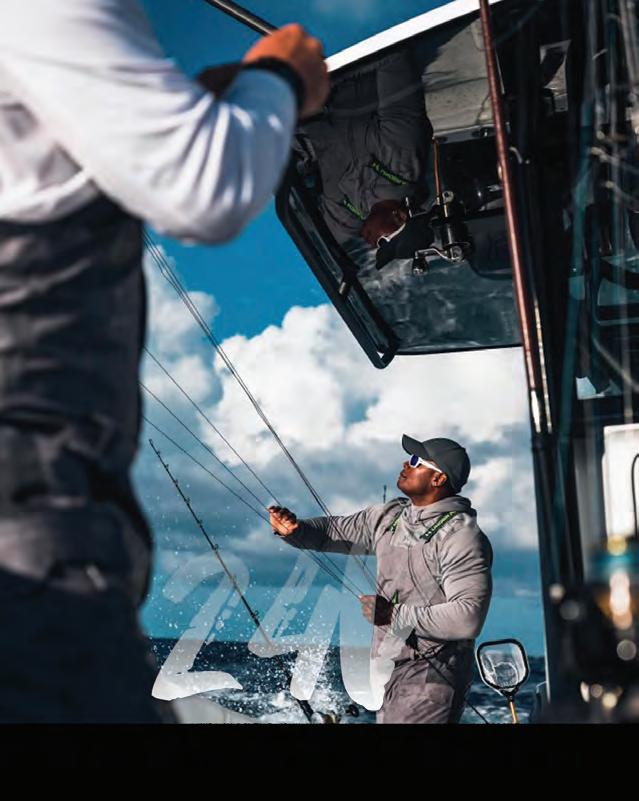











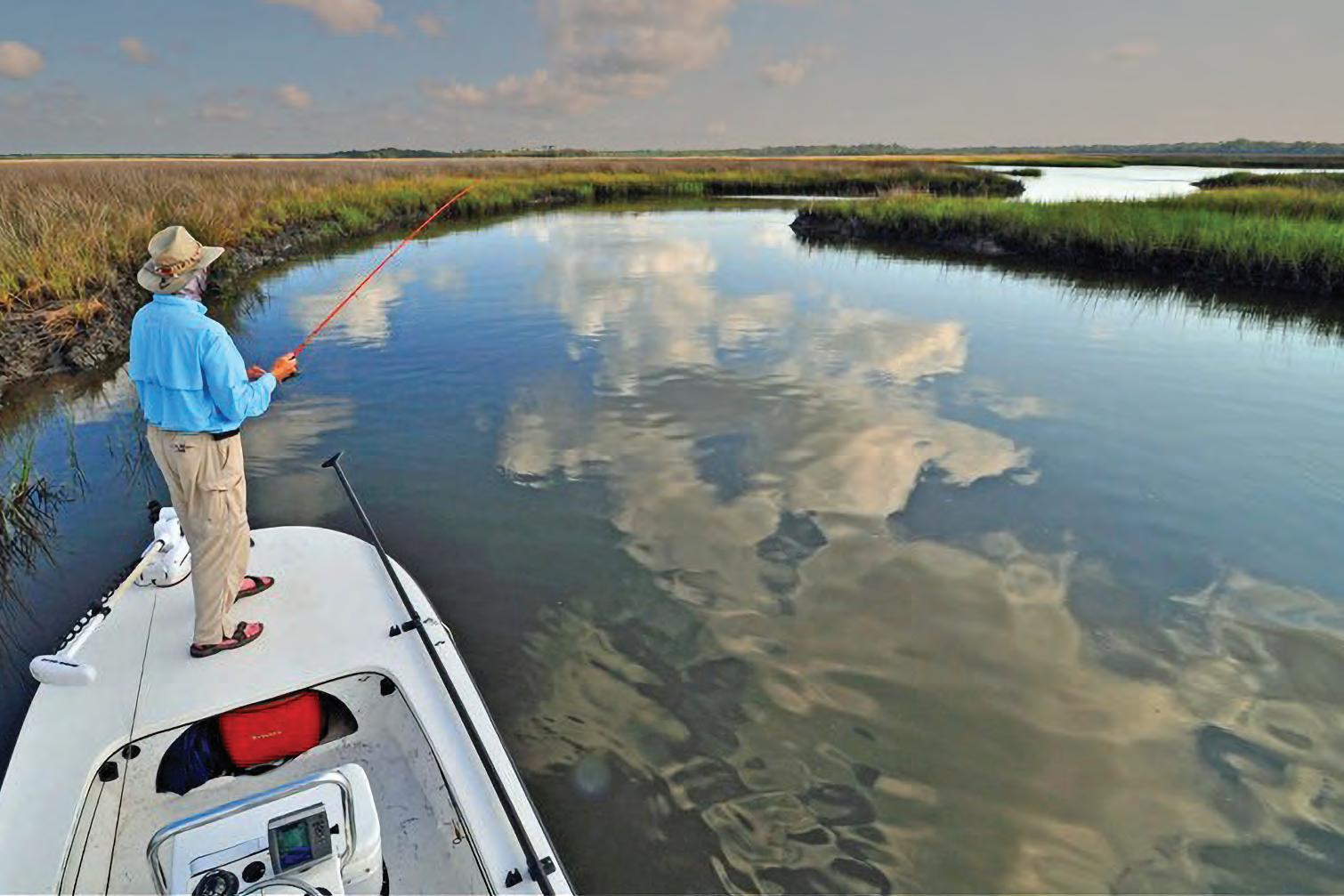
By Joe Woody
Somewhere in McDowell County, North Carolina, where the Blue Ridge Mountains lean in close and the rivers run clear enough to drink, there’s a place where sh outnumber people, and cell service is more suggestion than fact. It’s a land of steep gorges, sparkling lakes, and waters that curl through the woods like they have secrets to keep. Welcome to the triple-threat shing grounds of Lake James, the Linville Gorge, and the Catawba River — tucked into a county that doesn’t make much noise but delivers in trout, bass, and backcountry beauty.
If you’ve never heard of McDowell County, don’t worry — that just means the sh haven’t heard of you either, and your odds are still good. Whether you’re a dry-%y purist with a hip pack and a “River Runs rough It” complex or someone who likes to toss worms near pretty rocks, this corner of the Carolinas has a spot for you. Bass are stout and sassy. Trout are plentiful, and they have attitudes to match. So gas up the truck, tie on something that worked last season, and head for the hills. e shing is great, the views are even better, and McDowell County is ready to welcome you — even if the trout aren’t.
Lake James is the area’s big-water bu!et. is 6,800-acre reservoir between Burke and McDowell counties o!ers smallmouth and largemouth bass, walleye, crappie, bluegill, hybrid striped bass, and cat sh. Spring and early summer bring aggressive smallmouth to the surface from April to June. Tossing a Pop R or a Zara Spook at dawn can trigger explosive strikes. Crappie move shallow in May and June, while cat sh linger year-round, especially from fall through early spring. Bass shing is best around rocky points and submerged trees with crankbaits or so plastics. Walleye respond to trolling or jigging near the dam. If you’re a er cat sh, bring cut bait and patience. Lake James State Park has public ramps, campgrounds, showers, and picnic shelters — perfect for anglers who like their wild with a touch of comfort.

If Lake James is your comfy recliner, Linville Gorge is the rugged Adirondack chair that bites back. Known as the Grand Canyon of the East, this steep gorge is home to the Linville River, one of North Carolina’s best wild trout waters. e upper river holds wild and stocked rainbow, brook, and brown trout. Below Linville Falls, you’ll nd a backcountry adventure with native browns lurking in clear pools. Reaching prime spots requires steep descents, with some trails dropping 1,400 feet. e solitude and scenery reward every blister. Bring light tackle, stealthy casts, and plenty of water. Spring hatches bring trout to the surface, and a well-placed dry %y can tempt a wary sh. Remember your headlamp — climbing out in the dark is no fun.
Below Lake James, the Catawba River %ows cool and clear, sheltering rainbow and brown trout that grow large and wary. Float trips are ideal. An eight-mile dri from Bridgewater Dam to Morganton delivers ri sh. e Joseph McDowell Greenway o!ers piers, canoe launches, and bank access perfect for beginners or families. Streamers and weighted nymphs excel in the tailwaters, while warmer sections downstream attract bass and pan sh.
Wherever you cast, the sh here don’t come easy — but they come honest. And in this corner of the Blue Ridge, that’s the best kind of bite.
























Capt. Mike Smith

Black drums, aka “Big Uglies,” are a super fun sh to catch. It doesn’t matter if they are 18 inches weighing two pounds or 5 footers weighing 90 pounds. ey put up one heck of a dragpulling ght once they gure out that they’re hooked.
Black drum can be found in inlets, saltwater estuaries, bays, river mouths, brackish creeks and especially anywhere in close proximity to oyster beds as they love to eat oysters, clams, crabs, shrimp and bait sh. ey are o en in huge schools and will stay in one spot for a week or so if there is a lot of food for them and not a lot of predators, which means that you can catch dozens of them when the bite is on.
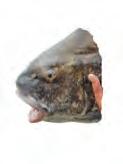
My favorite way to target “big uglies” is on the incoming tide, in shallow estuaries, less than 3 feet deep. at is when you can see them tailing as they root around oyster clumps for crabs and shrimp. A well-placed shrimp or crab o!ering will get their attention very quickly. Make sure you have enough weight to get it to the bottom so they can nd it.
on them. De nitely sh the older docks with the most stu! growing on them. ese docks pilings will attract the most crabs and shrimp to them. Old dock pilings are like grocery stores for black drum. When I sh the docks for black drum I usually have one of two baits with me. Live or frozen shrimp or a scented shrimp jig. ose are my goto baits for drum around the docks. Real shrimp works the best, but the scented jigs are pretty good too. A shrimp rigged with a small split shot is how I usually target black drum. Just cast it to where you think the sh are and wait for the hit. If you are shing with a scented shrimp jig just bounce it slowly on the bottom as you reel it in. It is similar to the way that you would sh for a %ounder. e slower the better.

Black drums have four nostrils, and their sense of smell is amazing, so the stinkier the bait, the better when targeting these sh. A great arti cial bait is the Berkely Gulp shrimp on a 1/8 ounce jig head. You can just cast it to the sh and let it sit on the bottom and wait for them to nd it. However, if you give it a bounce or two you will usually get their attention much more quickly.
Another great place to target “big uglies” is around docks. Dock pilings tend to have lots of oysters, clams, barnacles and sponges growing
For surf shing anglers, large schools of black drum typically work their way up and down the beaches in the cooler months feeding on crustaceans. Use a beefed up pompano rig, jig or sh nder rig and place them in front of the schools approaching. Long casts are o en needed, so be sure to have plenty of line capacity on your surf shing reels when targeting the large ones. Not to mention, once you hook into a big drum the drag is going to go screaming! You’ll want anywhere from 20-50 lb. main line for your best opportunity to land one.


Black drum make for a tasty dinnertime treat, but I wouldn’t suggest eating the big ones. ey are always full of worms. I nd that the best ones for eating are 28 inches or less in length.
I caught the black drum in the picture above on a dead shrimp. It was about a 50 pounder and took 30 minutes to get it in. I saw it tailing next to an oyster bar.
Capt. Mike Smith, owner of Fish Your Ass O Charters, is an inshore shing guide who has been shing the inshore waters, oyster bars and grass ats of Florida for more than 40 years. Reach him at (561) 339-2317, email: contact@ shyourasso .com or visit shyourasso .com.
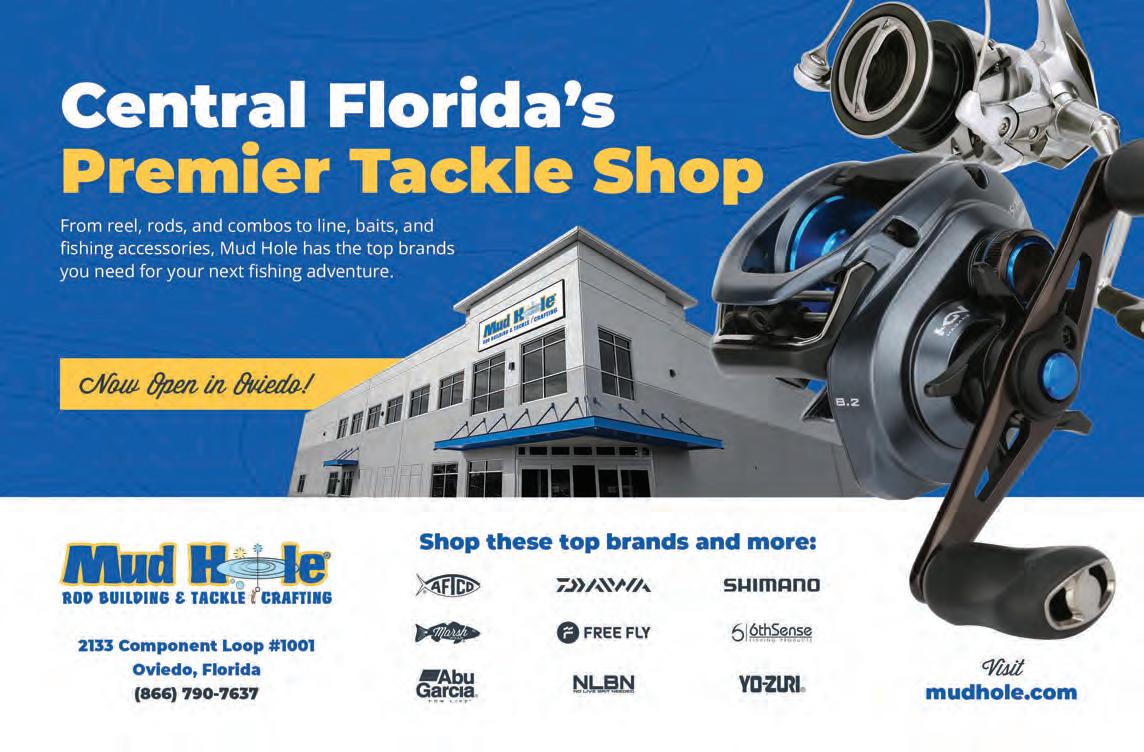










by Capt. Mike Able, Contributing Writer
One of the things I love about owning Haddrell’s Point Tackle is the people, the experiences, and the educating. In a recent seminar that myself, and Capt Mark Phelps did we shared our knowledge on targeting tarpon in the Lowcountry.
I consider the tarpon to be the “inshore blue marlin,” if you will. A fish put on a pedestal, due to its lower probability of hooking and actually landing one. Not to mention, they are not always here so your opportunities only last a few short months.
I wanted to recap the seminar and highlight some of the key ingredients to better your success to landing THE Silver King!
Tarpon are migratory fish, always on the go, eating a lot of bait, and never in a tight pattern that you can figure out. If you’ve dialed in redfish and feel very confident in being able to catch them at low tide and high tides, you can think the complete opposite of that for tarpon! I try and put a few key ingredients to better my chances of getting in front of the silver king. One of those would be a minimum of 75 degree water temperature. That is typically when the bait and other migratory species start to show up.
Being that these fish are migratory, you will not typically find them very far inshore. They will usually stay more oceanside in your inlets, sometimes just inside of your inlets and harbors, as well as a mile or two off the beach!
Another ingredient would be clearer moving water, and just the right amount. Full moon tides will make it tougher to fish and tougher to get a bite. Your traditional 5.5’ tide swing can be ideal. I prefer the incoming tide because it typically brings cleaner water.
You will certainly catch them on the outgoing tide, but whatever tide you fish cleaner water can be your friend. They have pretty good eyesight so you want that cleaner water so they can see your baits. Water depth and ambush points will be keys to success. I like to think of it like trout fishing but in more open and deeper water. Ambush points like rock jetties, sand bars, and even tidelines can congregate bait and make it take a certain line. Getting in front of or in those lines will improve your fishing. Tarpon can be caught in extremely deep holes and they can also be caught in three feet of water. For the angler bait fishing for them I would either be fishing a coupe live or fresh dead baits on the bottom in those holes toward low tide or fishing a drop off or ledge in six to fifteen feet of water.


Capt Mike Able
Haddrell’s Point Tackle & Supply • Since 1983
843-881-3644(Mt Pleasant)
843-573-3474(West Ashley)
Tarpon will literally eat any and everything possible. It can be a live or a dead bait, but I think the key to it would be it has to be fresh. Menhaden, mullet, ladyfish, bluefish, whiting, croaker, blue crabs, and of course a number of artificial lures can be used.
The other big ingredient is signs of life in the area you fish. You could have clear water, with a nice current but no bait and not even catching a shark. In places like that I would give it some time, but not too much. I want to feel like the area I’m in shows signs of life with bait popping, birds diving on them, and catching a shark here and there.
Once you've compiled as much of these above scenarios to better your chances of getting in front of one, now you need to make sure your tackle will withstand the battle. Fishing lures, I typically use sixty pound fluorocarbon about three feet long. I love a darker colored lured, simply because our water is usually stained and it will show up better. For those bait fishing, I would take my leader to eighty or even one hundred pound test fluorocarbon. I try and make my leaders as long as I can, but still be able to cast them. Usually four to six feet will do it. I like to fish two bottom rigs and two baits under a float. A typical hook size is an 8/0 Eagle Claw in-line circle hook, but you may need to go smaller or larger based upon the size of the bait you’re using. This is critical in my opinion. Be sure to tie the hook on with some form of a loop knot. Rods typically need to have a pretty decent backbone and tip section to be able to bury the hook.
Braided line is perfectly fine for main line, and you’d want to set your drag on the fairly “snug” side.
Now that you’ve hooked one prepare for a battle. You will want to try and keep the fight time to minimal with solid pressure and bowing to the king when they jump.
For more tips and techniques on landing your first Silver King please reach out to us! Either stop in the shop or call us! Local knowledge starts in your local tackle shop!


by Brooks Finneseth, Publisher
While strolling around the floor at ICAST, we ran into our friends from SCDNR. As we were discussing the Orlando heat, Matt Perkinson and Pamela Corwin shared some knowledge about our local waters here in the Lowcountry. These facts make It very clear that, Your Local Knowledge, Starts with Your Local Resources.
• Adult (bull) red drum are spawning in our inlets, harbors, and bays in August and September.
• These fish are producing the next generation of red drum and their successful spawning is critical for a sustainable fishery.
• This is also the time when water temperatures are highest, oxygen in the water is lowest, and shark activity is at a peak.
• Consider waiting to fish for bull drum until the water begins to cool in October. This gives the adults the best chance to have a successful spawn and replenish the population.
Source-
Matt Perkinson Fishing Outreach and Education
Marine Resources Division
South Carolina
Department Natural Resources



by Noah Corcoran, Contributing Writer
We’re in the thick of boating season—and this is when your maintenance habits can make or break the look (and longevity) of your boat.
At Marine Detail Supply Charleston, we see it every year: boats that were coated in the spring but haven’t been touched since. A ceramic coating is only as good as the care behind it. You wouldn’t go six months without washing your car—don’t do it to your boat.
Here are a few quick ways to stay ahead mid-season: Rinse Often, But Smarter: Use filtered or spot-free water when you can. High TDS (Total Dissolved Solids) water leaves behind spots that etch into gelcoat and paint. Use pH Balanced Soap: Harsh soaps strip protection. We recommend Starke Yacht Care's Pure Clean or Ultra Clean—gentle, effective, and safe for coated surfaces. Dry It Off Right: If you’re drying your boat, use clean microfiber or chamois cloths. Dirty towels = fine scratches and dull finish.
And while you’re enjoying the season, don’t forget to plan ahead. Scheduling off-season engine maintenance and a full detail before winter storage is one of the smartest ways to protect your investment. Covering a dirty boat traps grime and moisture—leading to staining, oxidation, and mildew that’s much harder (and more expensive) to fix in spring.
Keep enjoying your time on the water, and if your boat needs a refresh, we’re here with everything you need to do it right—or we’ll do it for you. Follow










by Jacob Cynar, Contributing Writer
ugust is here and the summer heat is still here. Air temperature in August can range from the mid-80s to the mid-90s. The water temperature in August usually is around 85 degrees. This means that fish will more likely be sitting at the bottom of the water column. Fish like black drum, spotted sea trout, and sheepshead are typically caught off the pier in August. Florida Pompano also visit the pier in August and can typically be caught in the surf zone around where the waves begin to whitecap. At the pier we typically recommend a simple 2-hook surf rig for any casual angler looking to catch anything; however, experienced pier anglers are able to adjust their tackle and bait to target specific species.

Sheepshead are unique fish, both in the way they look and the way they eat. Sheepshead have human-like teeth that they use to scrape barnacles and other prey off of the pier pilings. They are often picky eaters and are notorious for stealing bait. Anglers targeting sheepshead will usually use a smaller hook setup on a Carolina rig and for bait will usually use fiddler crabs, something the fish is likely to prey on. The anglers will drop their rigs to get as close to the pier pilings as possible and will keep an eye out for even the slightest bump.
Spotted sea trout are one of my favorite fish to catch off the pier and many anglers target them. Anglers will typically bring out a popping cork with about an 18” or 24” leader. An artificial shrimp lure or live shrimp is my go-to. By working the popping cork, you can mimic the sound of bait fish and draw the attention of the trout. This


setup works near the pilings of the pier with an incoming tide. Trout are really fragile fish so if you do catch one and plan on releasing it, it needs to be done quickly.
The Pier Gift Shop has everything you need for a successful day of fishing. When you stop by, check out our Summer Challenge leaderboard. This is a summer-long tournament for who can catch the biggest of specific fish. Our regular Cast Off Fishing tournament will resume on September 21st. At the tournament in June, the big fish was a 4 lb. 0.96 oz. black drum. We still have two more opportunities to dance the night away at our Moonlight Mixer events. The dates for the mixers are August 22nd and September 19th. However you choose to enjoy the pier, we hope you'll come out and see us soon!
Jacob Cynar, Operations Manager II Folly Beach Fishing Pier 101 E Arctic Ave, Folly Beach, SC, 29439 843-762-9516 • Jacob.Cynar@ccprc.com





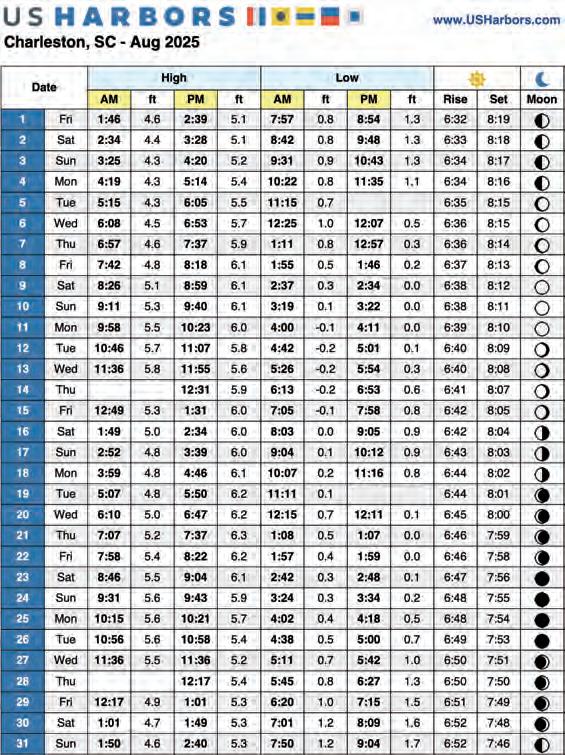












Anglers can have a great time fishing from a boat in Charleston, South Carolina. There are plenty of rivers, flats and other bodies of water that anglers can find and chase down fish. But there are a lot of anglers that do not have access to a boat or own one. For those that do have a boat, they just don’t have time to hook the boat up to their vehicle, find a location, put the boat in the water, park their truck, go fishing, head back to the boat landing or ramp, back the truck back down, load the boat and go through all the other maintenance procedures necessary to make sure that the boat is clean and will be in good working order for the next trip.
Wow! That sounded tiring! I didn’t mean to make taking a boat out sound discouraging, but to some, after a hard week of work, it does seem discouraging, and at times the angler just wants to go fishing—either off a bank or on a pier or in the surf. But let’s not forget Charleston’s tourists. There are a lot of tourists that come to visit Charleston that love to fish, but of course, after flying all the way here or driving, most of them certainly did not bring a boat with them, and they are just looking for public locations to fish from. This information is not easy to find for most people.
Yes, people grab their smart phone and run a Google search for ponds, lakes, piers, etc., and so many odd ball things pop up with advertisements, YouTube videos, fishing forums, and of course, most of them are just looking for a simple list of locations without drama, without advertisements and without having to read between the lines. So in this edition of Coastal Angler Magazine, I am going to give the readers a list of bank and pier fishing sites for Charleston County. I hope this helps anglers find a location to have a great time fishing.
For further details, you can find this public information on South Carolina’s DNR website. Just run the search, “DNR bank and pier fishing access sites for Charleston County” and keep in mind that some of their locations may no longer be accessible to the public as they had been in the past.
by Jiggin’ Jerry, Contributing Writer
YouTube Channel
Fishing With Jiggin Jerry or follow me on Facebook @fwjigginjerry
Name
Location and Description

Breach Inlet Bridge Located between Sullivans Island and Isle of Palms off State Road 703. Open year round. Inshore fishing.
Brittlebank Park Pier Located off West Lockwood Boulevard in Charleston; resides on the Ashley River. Inshore fishing.
Charleston Waterfront Park Located on Concord Street in downtown Charleston; resides on the Charleston Harbor. Inshore fishing.
Dawho Bridge Pier Located off Highway US 17, State Road 174 toward Edisto Beach; resides on Dawho River and Intracoastal Waterway. No fee. It has handicap access and is open year round. Inshore fishing.
Garris Landing Pier Located off Highway US 17, Road 584 to Road 1170; resides on the Intracoastal Waterway. It has a parking lot and is open for day use only. Inshore fishing.
James Island County Park Pier Located off Riverland Drive in James Island; resides on the Stono River, tidal creek; ran by Charleston County Parks and Recreation and subject to park fees. Inshore fishing. The park also has two freshwater ponds that are fishable and have Blue Gill, Largemouth Bass and Catfish. Freshwater fishing.
Mount Pleasant Pier Located under the Ravenel Bridge at 71 Harry Hallman Jr. Blvd. This is a pay pier; adults are $5.00 and children under 12 and adults 60+ are $3.00. Because it is a pay pier, no state fishing license is required. Inshore fishing.
Old Georgetown Rd Pond Bank Located off Old Georgetown Road, S-10-1335, about 28 miles from Mt. Pleasant. Palmetto Islands Located in Mt. Pleasant, 444 Needle Rush Parkway, ran by Charleston County County Park Fishing Pier Parks and Recreation; the pier resides on Horlbeck Creek. The park charges $2.00 per person in vehicle. Inshore fishing.
Pitt Street Bridge Located at the end of Pitt Street in Mt. Pleasant; resides on the Intracoastal Waterway. It is open year round. Inshore fishing.
Remley’s Point Landing Located just outside the Charleston Harbor off County Road 56, just Fishing Pier north of US Highway 17 in Mt. Pleasant. It has handicap access. Inshore fishing.
Sol Legare Fishing Pier Located on Sol Legare Road in James Island; resides on the Stono River. It is open year round. Inshore fishing.
Sunrise Park Fishing Pier Located in Melton Peter Demetre Park on Wampler Drive in James Island; resides in the Charleston Harbor. It has benches, picnic pavilion, picnic tables and restrooms. Inshore fishing.
The Battery Located in downtown Charleston. It is the seawall at White Point Gardens, Murray Avenue. Seawall borders the Charleston Harbor. Open year round. Inshore Fishing.
Twin Ponds Bank Located off Willow Hall Road about 23 miles from Mt. Pleasant.
Willow Lake Bank Located off Willow Hall Road about 19 miles from Mt. Pleasant.





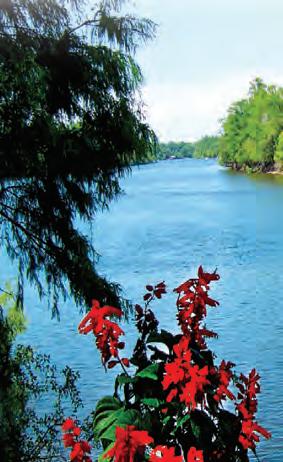






Of course Shimano was in the house with a huge booth

The Lowcountry fishing industry was on full display and well represented
Z Man and Eye Strike fishing, local favorites in
Shea and Esme’ were there with their Atollas fly boxes and patches opening new sales channels
Fresh off their move onto King Street with their brand store, Marsh Wear was working with buyers
Our friends from SCDNR were spreading conservation knowledge, (see What I Learned, feature), I appreciate Pam and Matt spending time with us.
And you know you can’t be around this much fishing with out running into the Pluff Mud Princess entourage.
Made it to Orlando for ICAST and our Annual Publisher’s Meetings
September 3
International Fly Fishing Film Festival
Music Hall, Charleston, SC
Tickets $15 available at both Haddrell’s Locations
September 7-13
CPR Tournament for Speckled Sea Trout, Redfish and Flounder
Toadfish and Release over 20” 15K in Cash and Prizes • Info at www.toadfish.com
September 11-13
3rd Annual Marshwear Clothing
Lady Red Tournament
More Info at www.marshwearclothing.com
September 13
Mt. Pleasant Pier
Cast Off Fishing Tournament
6 am-2 pm Charleston County Parks
Multiple Prize Categories • More info at wwwccprc.com
Sept. 13 & 27, Oct. 11, Nov. 22
SALTT (Student Angler League Tournament Trail) Virtual Inches Redfish Tournaments for School age Anglers
Charleston and Beaufort Areas
More info at www.salttfishing.com
September 20
Folly Beach Pier
Cast Off Fishing Tournament
6 am-2 pm Charleston County Parks
Multiple Prize Categories • More info at www.ccprc.com October 11
Mt. Pleasant Pier
Cast Off Fishing Tournament
6 am-2 pm Charleston County Parks
Multiple Prize Categories • More info at wwwccprc.com October 25
Folly Beach Pier
Cast Off Fishing Tournament
6 am-2 pm Charleston County Parks
Multiple Prize Categories • More info at wwwccprc.com

by Chris Pounder, Contributing Writer
here’s a lot of variety to what anglers are seeing out here and we expect that to continue into August and September. A good bet for this time of year is to be ready to throw a couple of different baits depending on what’s going on in the water. It’s also a good idea to bring an umbrella for shade since the few covered structures on the pier fill up quickly.
The River Watch Café and Gift shop on the pier sells frozen shrimp, squid, finger mullet, and sand fleas, or you can grab some live bait on your way out. Lately we’ve seen groups of anglers do very well for whiting and croaker with cut shrimp and squid from the freezer. One group of three left with more than 30 whiting using that method. Mud minnows or mullet are commonly used to target flounder, sea trout, red drum, and Spanish mackerel. For flounder you’ll want to fish on the bottom; however, the other species can be targeted at various depts within the water column.
A great way to easily search different depths is to use a slip bobber setup. Basically this setup involves a slip knot that is tied with a piece of floss (or similar material) to your mainline and a bobber underneath it. To adjust the depth of your bait, simply slide the knot up or down, leaving a desired length of line. This is a popular method when targeting freshwater catfish, but the basic principle works great in saltwater as well.

Submit your upcoming events or tournament Info to: brooks@coastalanglermagazine.com

Fishing tournaments will be back in September and October. The next Cast-Off Fishing Tournament will be Saturday, September 13, from 7am – 2pm. Entry is just $5 plus the daily fishing fee. Prizes will be awarded for the 3 biggest catches by weight as well as prizes for best 5 fish aggregate and youth catch. Registration is available on site the day of the tournament beginning at 7am. Mark your calendars for the October 11 tournament with the same hours as well.
Would you like to see your catch featured here in next month’s article? Be sure to stop by the café on the pier or flag down one of our staff to share your fish story. We’re always looking to share what you’re catching and it doesn’t have to be a record breaker. Fish does need to be caught from the Mount Pleasant Pier to be featured. Be sure to check out charlestoncountyparks.com for the latest information and dates for special events on the pier and around the county. See you on the pier.
For any additional information about the pier or what’s biting this week feel free to call the River Watch Cafe & Gift Shop on the pier at 843-762-9946
Chris Pounder, CPRP Manager, Mount Pleasant Pier



After a weather delay, the HuK Cobra Tournament got on the water June 21st with a huge Saltwater Cowboys crowd and fish to weigh




Capt. Parker Inkelaar at Palm State Fishing in Edisto is spending the summer putting clients on fish… Get yourself on the water!

Here’s a king mackerel recently caught at the Folly Beach Pier by Kevin Kaylor that weighed 34 lbs 3.52 oz. (Not to mention the jacks at his feet)

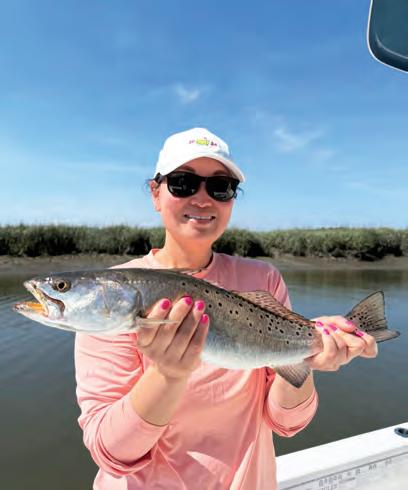


Jake Harmon caught this 35” scamp grouper off the coast of Charleston on a 240 gram slow pitch jig


It’s no fsh tale when you run with a John Deere. You can get everything done faster and easier, so you get more time on the water. Plus, our special offers make them the catch of the day.



The boating industry is jumping onboard with Dometic’s revolutionary DG3 Gyrostabilizer, due to its groundbreaking spin-up and spin-down times, energy e%ciency and superior performance in all types of sea conditions. is solution has literally taken vessel stabilization to a “Whole New Level,” capturing the attention of boaters and boat builders around the world. e !rst in a planned line of advanced stabilization solutions by Dometic, the new DG3 is targeted at the 35- to 41-foot !shing boat market.
Soon a er Dometic won the 2025 NMMA Innovation Award at the Miami International Boat Show for the DG3, leading American boat builder Regulator Marine announced that its new-for-2025 Regulator 35 Center Console would be o ered with Dometic’s DG3. “We are honored to have a respected builder like Regulator come onboard,” said Dometic Marine Segment President Eric Fetchko. “ eir latest center console agship is an ideal match for our system in terms of size, hull performance, overall quality and a wide range of premium features and technology. It’s also a wonderful platform to showcase our advanced capabilities, including energy e%ciency that enables o shore use without the need for an onboard generator,” added Fetchko.
e DG3 reduces spin-up time by more than 65%, reaching full readiness in just 16 minutes, compared to the typical 50 minutes required by current systems in the market. is means you’ll
get out on the water and out to distant !shing grounds faster. e system’s downtime is equally impressive, fully lowering in just 20 minutes, a signi!cant improvement over the eight or more hours (15X faster) required by current systems.
Dometic also pioneered innovations in energy storage and recapture, enabling the battery to recharge e%ciently. DG3 uses Dometic’s proprietary, industry-proven Inverted Roller Screw technology for true dynamic control and signi!cantly improved roll reduction performance over a wide range of sea sates. In addition, the push-pull motion of Dometic’s all-electric procession actuator is used to create power that contributes to running the system. During spin down, Dometic’s regenerative braking technology recharges the system’s dedicated 48V Lithium-Ion spin-up battery for the next use. Overall, the DG3 reduces power consumption by an impressive 40% compared to other gyros on the market.
DG3’s Inverted Planetary Roller Screw technology and proprietary all-electric procession actuator provide dynamic control of the gyro hemisphere for instant response to vessel movement and superior comfort over a full range of sea states. is allows DG3 to react faster to heavy wave motions, while also smoothing the ride in small and long period waves, where current gyros are less e ective.
Durability and reduced maintenance were also key goals for Dometic engineers. Dometic’s



durability, minimizes required service, and reduces total cost of ownership. Featuring a slower-spinning ywheel, larger, more robust bearings, patentpending inner race cooling, parallel path cooling, and a titanium heat exchanger, the DG3 is designed to stay cool and operate reliably for the long run.
Dometic designed the DG3 as an easy “dropin” replacement for other comparably sized systems available in the market today. e DG3 !ts within the same footprint and clearance speci!cations and features reversible mounting feet to address common challenges encountered by installers. To meet the needs of today’s boating market, Dometic’s DG3 is compatible with 12-, 24- and 48volt house battery systems.
To learn more about how Dometic’s DG3 can take your o shore shing adventure to a whole new level, visit www.dometic.com.





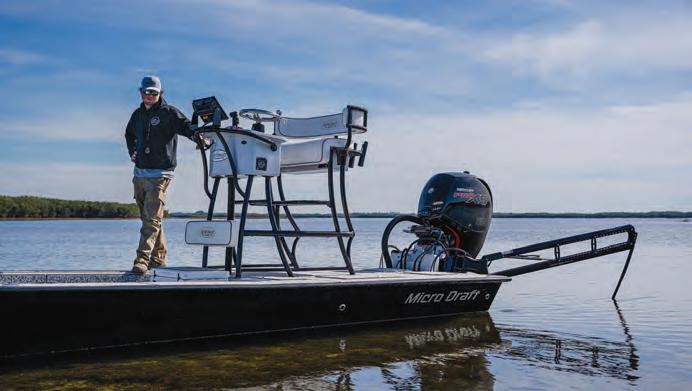








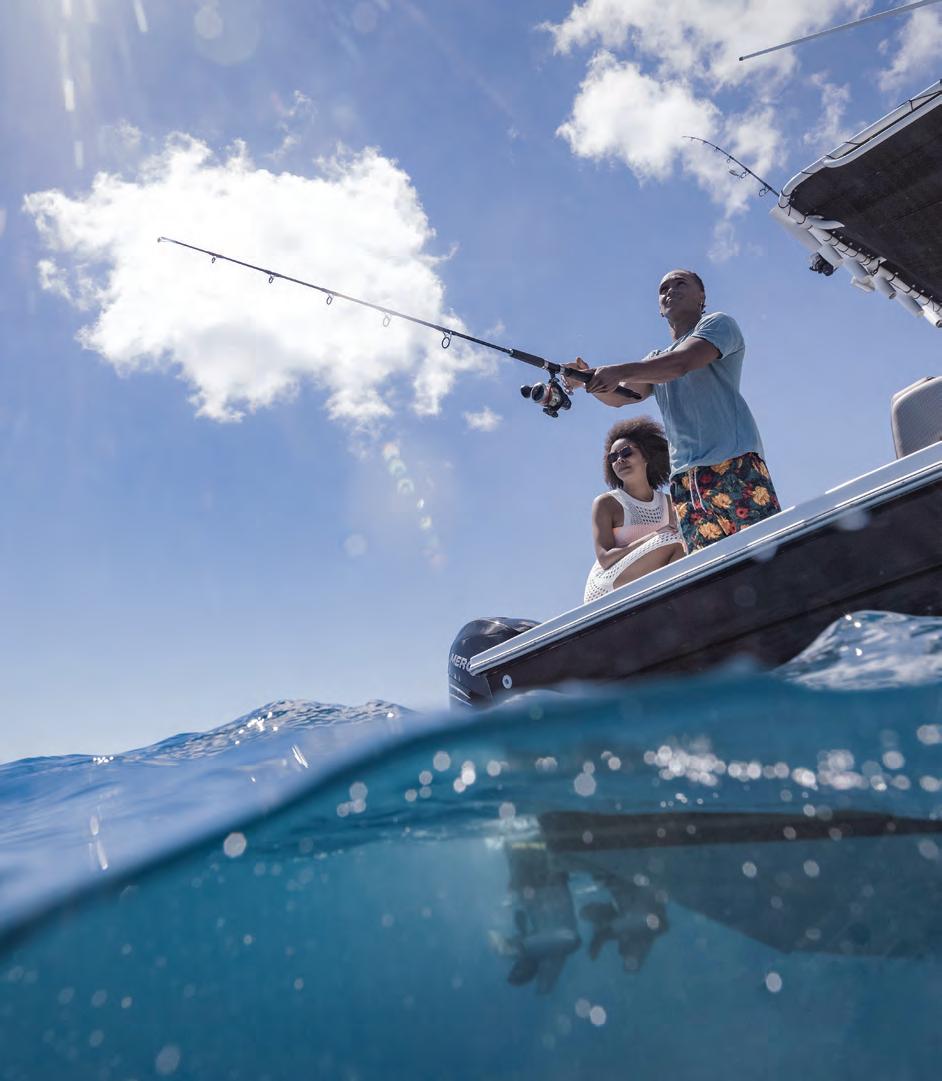
Nestled in the heart of the Caribbean, the US Virgin Islands embody a harmonious blend of natural beauty, cultural vibrancy, and laid-back serenity. ese islands are more than just a picturesque getaway; they are a living testament to nature’s rhythm and resilience, e ortlessly in tune with the world around them.
With no passport required for U.S. citizens, from the moment you arrive, the islands’ natural rhythm is palpable. e gentle sway of palm trees, the soothing sound of surf crashing against sandy shores, and the vibrant melodies of local music all echo the heartbeat of this tropical paradise. e islands’ lush landscapes, with their verdant hills and crystal-clear waters, mirror the steady pulse of life that sustains the local ecosystems and communities alike.
e US Virgin Islands’ environment is a symphony of biodiversity with world class shing and diving. ese natural elements are not static; they dance in harmony, in uenced by the tides, wind, and seasonal changes—further emphasizing the islands’ intrinsic rhythm. is delicate balance underscores the importance of conservation e orts, ensuring that future generations continue to experience the islands’ natural cadence.
Culturally, the US Virgin Islands are equally in tune. e music, dance and festivals re ect a vibrant heritage rooted in African, European and Caribbean traditions. e spirited calypso beats
and reggae rhythms are expressions of life's ongoing dance—celebrating resilience, community and joy. ese cultural expressions are an extension of the islands’ natural rhythm, showcasing how human life here moves seamlessly with nature’s ow.


In a world o en dictated by chaos and rapid change, the US Virgin Islands serve as a reminder of the beauty of being in sync with nature’s tempo. eir natural, cultural and ecological rhythms o er
a blueprint for sustainable living and harmony. As travelers and residents alike continue to embrace this rhythm, they uphold a legacy of balance—one that celebrates life’s natural ow and the enduring spirit of these remarkable islands. In the US Virgin Islands, being in rhythm isn’t just an ideal; it’s a way of life.






In some parts of the country the bass spawn is already starting to come to an end like it is down here in Florida and others may not start up for another couple months. Regardless of your phase, this post spawn !shing tip should help you dial in your !shery when the time is right for you! One thing is the same for every !shery and every species of bass a er they spawn, they are hungry! is can create some awesome and fun !shing opportunities that have led me to some of my best days on the water.
Typically a er the largemouth bass spawn, there are other !sh that will then begin their spawn. I’m not a scientist, but I’m sure this has a lot to do with the speci!c timing of why the bass do their thing when they do. In most areas of the southern United States, I know that the bluegill and o en times the shad, if they are in your lakes, will start to spawn very shortly a er the bass !nish up. Bass will use every advantage they can when these bait!sh group up to feed back up a er a long couple weeks or months protecting their eggs in the shallows and this can make for some fun !shing.
Smallmouth bass and spotted bass are very similar as well in the aspect of taking advantage
TYLER WOOLCOTT

of bait schools when they get in that post spawn phase. I have seen them group up and attack shad, perch, alewife schools and any other bait that is readily available to them. Typically I do a lot of my searching for these things with my electronics and forward facing sonar which is a very helpful tool for learning !sh activity and seeing what’s going on under the surface of the water.
Most of the time you can use clues you can visually see with your eyes to help you !nd this feed that is going on. Typically birds feeding on the water is an awesome sign of a feeding frenzy and that is one thing I ALWAYS look for. Also always keep your eyes peeled for !sh blowing up on the surface or shad ickering as well. Sometimes the very smallest clue can lead you to much larger picture. Birds standing on speci!c banks, the sound of bluegill popping around vegetation, anything that clues you in to bait in the area usually means the bass aren’t very far.
Hopefully this tip will help you when the !sh in your area get into the post spawn feed! Find the bait, you will !nd the bass! I always try to duplicate the bait!sh with whatever kind of lure you are throwing. Bluegill eaters - I will

throw a frog or a swimming in bluegill colors, etc. Shad eaters - I will throw white or silver topwaters and crankbaits, etc. Always match the hatch if possible! Good luck out there this season and tight lines!
Tyler Woolcott is a professional tournament angler and guide. Check out his website at www.tylerwoolcott shing.com.


“I never expected it to be so beautiful that it takes your breath away.”
— Kaya C., on Stauer Opals
In a quaint village, nestled between rolling hills, lived a young woman with a deep appreciation for gemstones. Her grandmother gifted her a delicate cross pendant adorned with opals. "e opals shimmered with a mesmerizing play of colors, reflecting hues of blues, greens, and fiery oranges. Her grandmother shared the legend of the opals, believed to bring hope, purity, and luck to those who wore them.
Using this story as inspiration, Stauer brings you the Opal Spirit Cross Pendant. With over 2 total carats of Kyocera lab-created opals set in .925 sterling silver encased in yellow gold, this pendant is a radiant celebration of beauty and craftsmanship. Each opal captivates with a kaleidoscopic dance of fiery oranges blending into oceanic blues, streaked with flashes of vibrant green that seem to come alive with every movement. "e shimmering opals are skillfully arranged to create an enchanting, otherworldly glow, embodying the spirit of hope and harmony.
"is breathtaking combination of color and craftsmanship is available as a limited availability of

only 930 pieces, making it a rare and treasured addition to your jewelry collection. Plus, when you order today, you’ll receive the gold-!nished sterling silver chain—a $69 value—absolutely free!
Don’t miss your chance to own this exclusive tribute to timeless elegance and meaningful symbolism. Necklace Speci!cations:
• 2 ½ ctw. Kyocera lab opals and DiamondAura® accents
• Yellow gold-finished .925 sterling silver setting
18"
silver



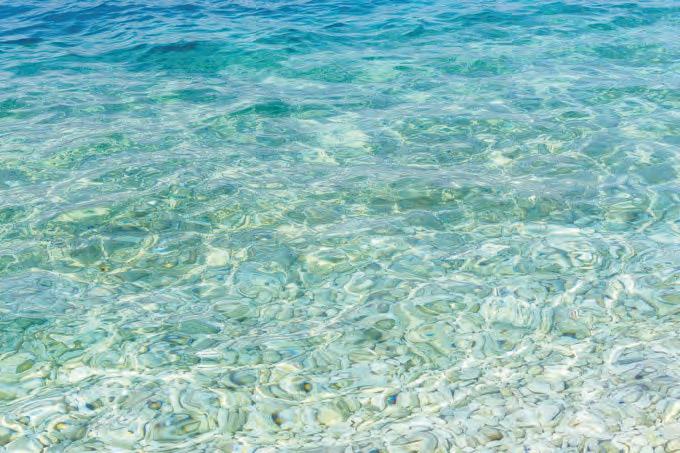









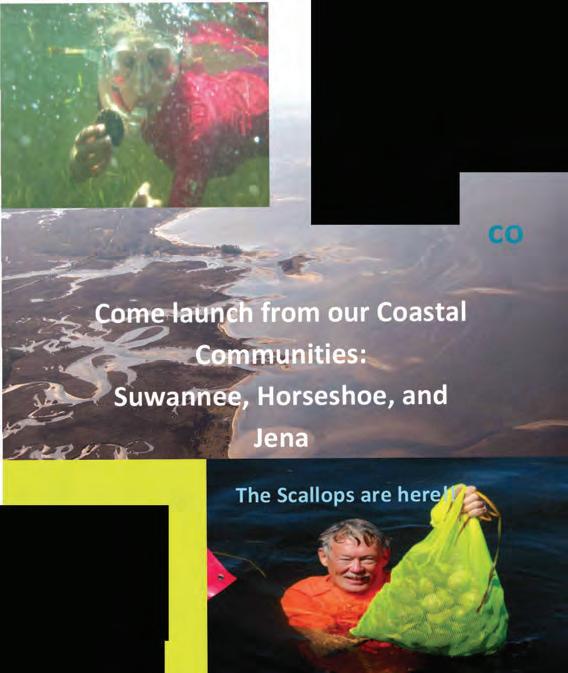



The quest to find the ultimate men’s watch has traditionally been a difficult one in the world of fashion. A timepiece with the perfect look and functionality has long been the goal of both watch designers and enthusiasts alike.
The Renegade Blue Chronograph Men’s Watch is the perfect combination of style and function. With a sleek design that features a bold blue dial, rose gold hands and hour markers, and a durable sports silicone band, this timepiece will instantly elevate any outfit.
The three sub-dials provide a precise timekeeping function. The sports silicone band is durable yet comfortable, providing a secure fit that won’t slide around on your wrist. The band is also easy to clean and maintain, making it perfect for everyday wear. The watch’s 30 Metre Water Resistance rating ensures that it has you covered whatever the occasion.
The Renegade Blue is also built to last, with a sturdy stainless steel caseback and exquisitely detailed bezel. The watch is powered by a super reliable quartz movement, which is covered by our incredible 5 Year Movement Warranty - ensuring accurate timekeeping for many years to come!

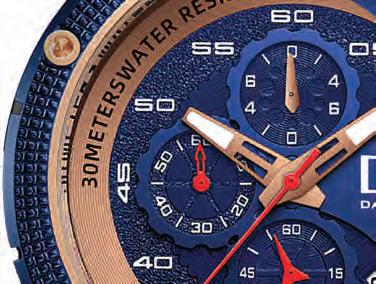

At the amazingly low price of just $99 plus S&H, this watch is an absolute steal. Don’t miss out on the chance to own the Renegade Blue and Rose Gold Chronograph Men’s Watch - order yours today!












